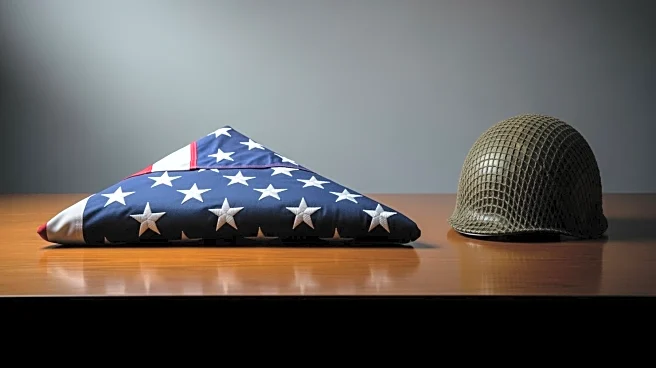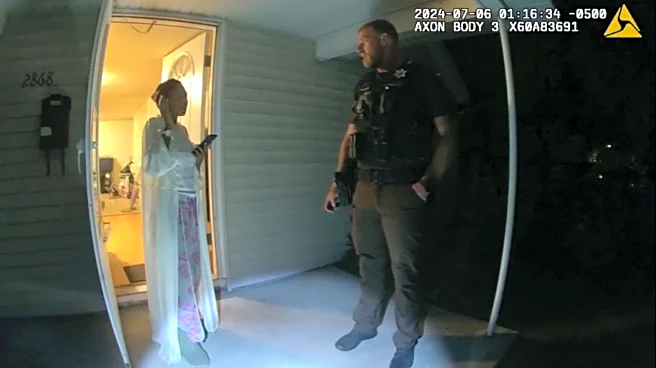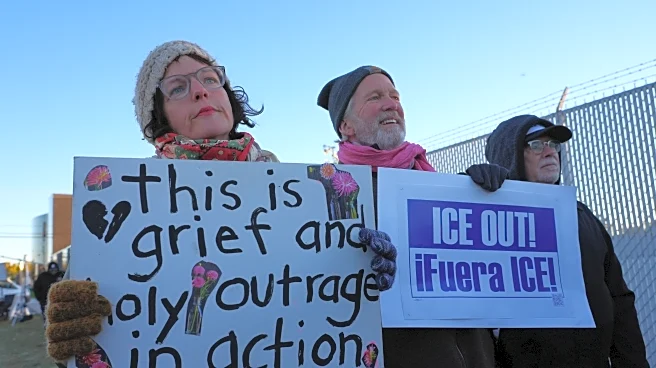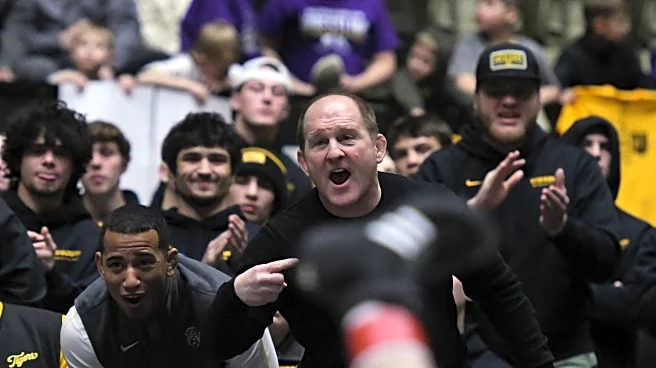What's Happening?
Pfc. Vincent Vega, a soldier who went missing in action during the Korean War in 1950, was finally laid to rest on October 3, 2025, in Elwood, Illinois. Vega was only 18 when he joined the Army and was sent
to the front lines in Korea, where he fought against a Chinese offensive. His status as missing in action persisted for 75 years until his remains were identified through DNA analysis earlier this year. The funeral was attended by about 20 family members, including his nephew Louis Vasquez and niece Barbara Schoenfeld. The ceremony was held at St. Joseph Catholic Church in Joliet, with military honors provided by an Army funeral honors team and a local motorcycle group, Rolling Thunder, escorting the procession.
Why It's Important?
The identification and burial of Pfc. Vincent Vega highlight the ongoing efforts to account for soldiers missing in action from past conflicts, providing closure to families who have waited decades for answers. This event underscores the advancements in DNA technology that have made it possible to identify remains long after conflicts have ended. For the Vega family, this marks the end of a long period of uncertainty and the beginning of healing. It also serves as a reminder of the sacrifices made by service members and the importance of honoring their contributions, regardless of how much time has passed.
What's Next?
The successful identification of Vega's remains may encourage further efforts to locate and identify other missing soldiers from the Korean War and other conflicts. Families of missing service members may find renewed hope in the possibility of closure. The U.S. government and military organizations are likely to continue investing in technologies and initiatives aimed at resolving MIA cases, which could lead to more families receiving the answers they have long sought.
Beyond the Headlines
The story of Pfc. Vincent Vega also touches on broader themes of memory, legacy, and the enduring impact of war on families and communities. It raises questions about how societies remember and honor those who have served, and the role of technology in bridging the past with the present. The emotional and cultural significance of finally bringing a soldier home after so many years cannot be overstated, as it reinforces the values of duty, sacrifice, and remembrance.













